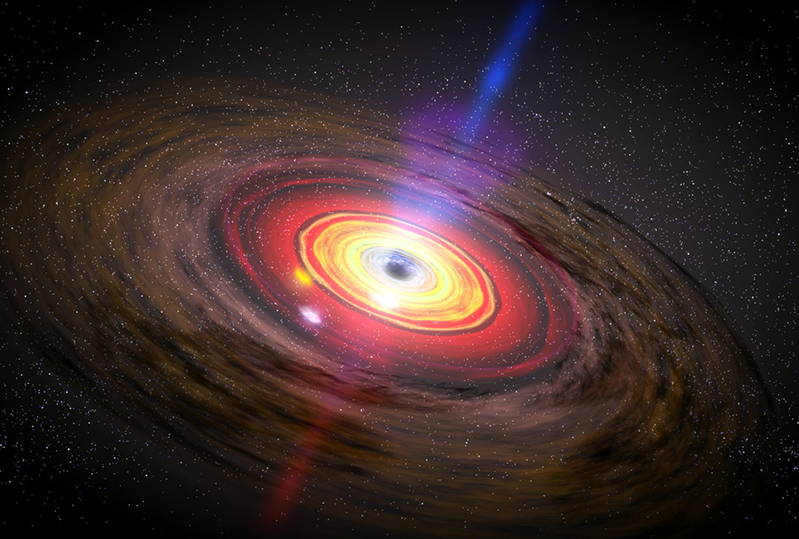
The Hubble Space Telescope captured a video showing a black hole from a galaxy 260 million light years away shooting a jet of plasma traveling at 98 percent of the speed of light, resulting in a collision.
The discovery, which was first reported in the journal Nature, was captured over a series of images spanning 20 years from Hubble. According to a report from BBC News, the event, which involved a "dazzling impact," happened in the heart of the sixth brightest galaxy in the universe.
"Something like this has never been seen before in an extragalactic jet," Dr. Eileen Meyer of the Baltimore-based Space Telescope Science Institute, or STScl, said. "This will allow us a very rare opportunity to see how the kinetic energy of the collision is dissipated into radiation."
BBC News reported that the jet spotted in the Hubble images occurred in 1992. The time-lapse movie comprised of four images that were taken from 1994 to 2014.
"The observations were only [possible] because of the sensitivity of the Hubble telescope - and the fact that it has been peering into deep space, from its orbit 500 km above the Earth, for more than 20 years," BBC News wrote.
According to BBC News, the black hole captured in the images formed the "active nucleus" of NGC 3862, an "elliptical galaxy 260 million light-years from Earth." Astronomers believed that the plasma jet is "highly energized."
"The beam of material is actually being blasted roughly in our direction," BBC News wrote. "This compresses our view of the 'string of pearls' of blobs within the plasma jet, and makes the images more difficult to interpret."
According to STScl, the finding provided new insights into the behavior of "light-saber-like" jets. However, the "superluminal" motion captured by Hubble was "an optical illusion due to the fast real speed of the plasma, which is close to the universal maximum of the speed of light."
"They appear to transport energetic plasma in a confined beam from the active nucleus of the host galaxy," STScl wrote in regards to extragalactic jets. "The new analysis suggests that shocks produced by collisions within the jet further accelerate particles and brighten the regions of colliding material."
British astrophysics professor Martin Hardcastle of the University of Hertfordshire told BBC News that it was "very nice to see" the evidence of such a collision.
"These chunks of stuff follow each other up the jet and you would expect fast ones to run into slow ones," Hardcastle wrote. "When that happens what you get is a hydrodynamic shock, which means that energy is transferred from blob number two, to material that used to make up blob number one. As a result, you increase the energy of the particles in the fluid... so you see a brightening effect."
Hardcastle admitted that the images were subject to "a lot of interpretation," given that "Hubble can't see this as sharply as you would like."
"It's perfectly plausible that's what they're seeing," Hardcastle quipped.
According to STScl, only a few extragalactic jets have been seen in optical light. However, they have previously been detected "at X-ray and radio wavelengths in many active galaxies powered by central black holes."







